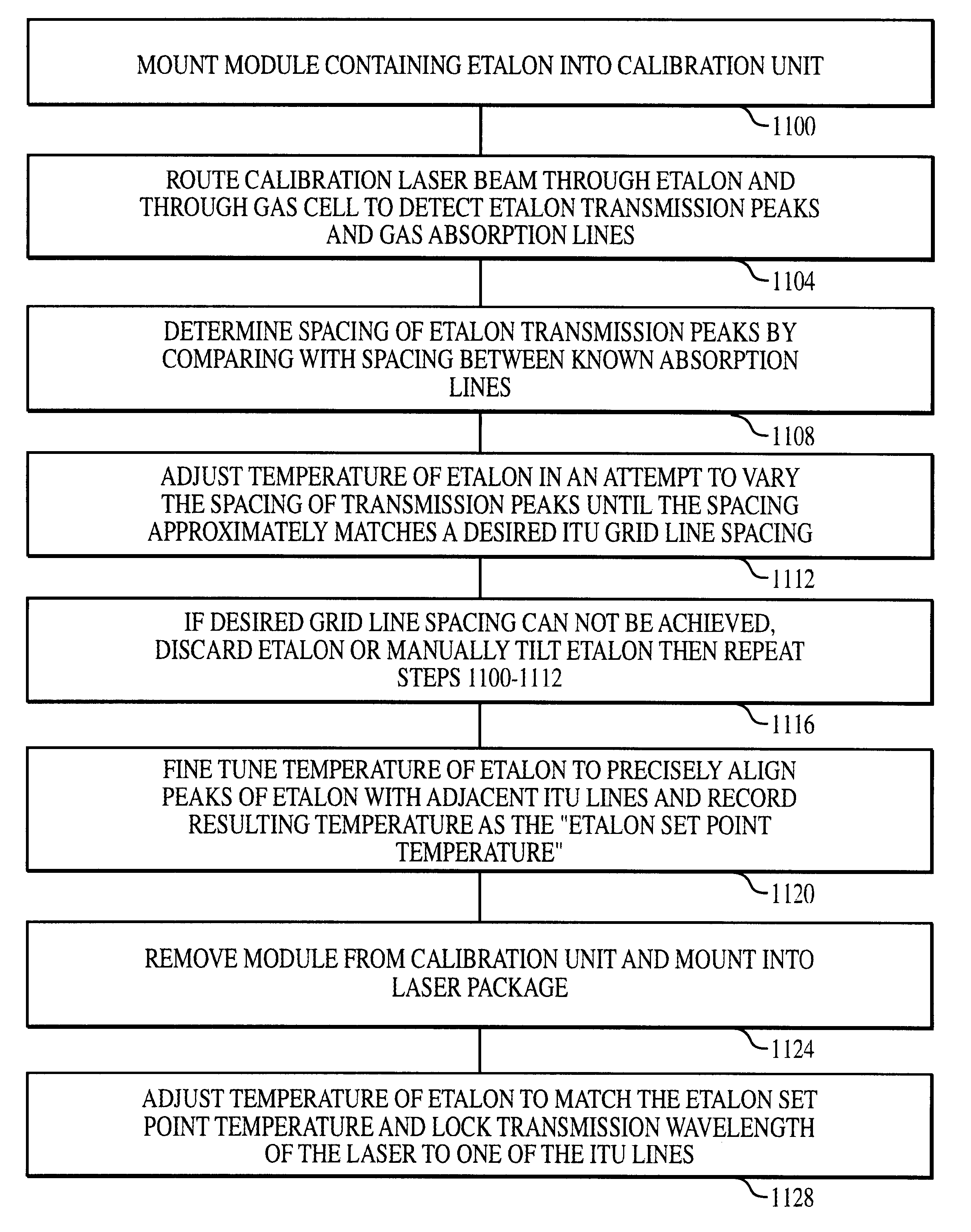Method and system for locking transmission wavelengths for lasers in a dense wavelength division multiplexer utilizing a tunable etalon
a technology of dense wavelength division and laser, applied in the direction of optical radiation measurement, instruments, spectrometry/spectrophotometry/monochromator, etc., can solve the problems of difficult and time-consuming process, requiring skilled technicians, and not providing rapid switching between itu transmission lines. , the arrangement is costly and time-consuming,
- Summary
- Abstract
- Description
- Claims
- Application Information
AI Technical Summary
Problems solved by technology
Method used
Image
Examples
Embodiment Construction
With reference to the remaining figures, exemplary embodiments of the invention will now be described.
FIG. 2 illustrates a DWDM 200 having forty individual WTLs 202 for transmitting optical signals on forty ITU C-band channels via a single optic fiber (not shown). In FIG. 2, an optic fiber output from a selected WTL is connected via a fiber optic line 203 to the input of wavelength mapper 204 (which may be either integrated into a fixed machine or in a hand-held, portable unit) configured for automatically determining the transmission wavelength of the WTL as a function of WTL tuning parameters, such as a WTL control voltage or current, output from the wavelength mapper to the selected WTL of DWDM via a control line 205. Although a forty channel DWDM is shown, in other implementations 80, 160, or more WTLs are provided. Also, other lasers may be employed in the alternative, such as DFB lasers, provided their tuning range is sufficient to record a minimum number of gas absorption lin...
PUM
 Login to View More
Login to View More Abstract
Description
Claims
Application Information
 Login to View More
Login to View More - R&D
- Intellectual Property
- Life Sciences
- Materials
- Tech Scout
- Unparalleled Data Quality
- Higher Quality Content
- 60% Fewer Hallucinations
Browse by: Latest US Patents, China's latest patents, Technical Efficacy Thesaurus, Application Domain, Technology Topic, Popular Technical Reports.
© 2025 PatSnap. All rights reserved.Legal|Privacy policy|Modern Slavery Act Transparency Statement|Sitemap|About US| Contact US: help@patsnap.com



